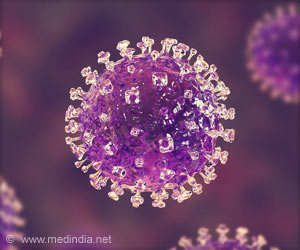“For the first time, we were able to visualize the spread of the SARS-CoV-2 in a living animal in real time, and importantly, the sites at which antibodies need to exert effects to halt progression of infection,” said Kumar, associate professor of infectious diseases at Yale School of Medicine and a co-corresponding author of the paper.
‘Antibodies have to be present at the right time in the right place in the body to neutralize COVID-19.’
Researchers used bioluminescent tagging and advanced microscopy to track the spread of the virus down to the level of single cells.
In mice, the virus took a route that has become familiar to doctors treating human patients, with high viral loads first appearing in nasal passages and then travelling quickly to lungs and eventually other organs. The mice eventually died when the virus reached the brain.
Plasma from humans who had recovered from COVID-19 to treat some of the infected mice, which halted the spread of the virus even when administered as late as three days after infection.
When these antibodies were administered prior to infection with the virus, researchers found that they prevented infection altogether.
So, antibodies have two main roles such as Neutralizing antibodies bind to and prevent viruses from entering cells. Then, a second part of the antibody exhibits what are known as “effector” functions, which are necessary to signal the immune system to attack and kill cells that are infected.
In this study researchers show antibody’s capacity to ‘call for help’ from other cells in the immune system and eliminate infected cells is required to provide optimal protection.
Source: Medindia



